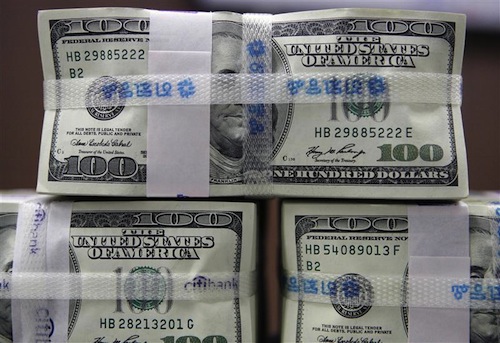LONDON, Aug 28 — The dollar fell heavily against most major currencies today, weighed down by the prospect of lower US interest rates for a long time, while the Japanese yen rose after news that Prime Minister Shinzo Abe will resign.
Japanese stocks tumbled and the safe-haven yen erased some recent losses overnight when it was reported that Abe, the nation’s longest serving prime minister, will step down due to worsening health.
The yen, which had fallen to a two-week low of 106.945 yen per US dollar, strengthened after the news, as investors grew cautious about the possibility of a shift away from Abe’s expansionary economic policy — “Abenomics”.
It strengthened to as much as 105.5 by 0933 GMT. It then eased slightly and was at 105.685 by 1009 GMT, with the dollar down around 0.8 per cent versus the yen since New York’s close .
“You could argue if Abe is formally exiting then it inevitably causes people to call into question Abenomics of which the ultra easy Bank of Japan policy is one of the key planks,” said Ray Attrill, head of FX strategy at National Australia Bank.
“Almost certainly, it’s not a justified response but you’d understand the psychological knee-jerk reaction is sort of based on that line of thinking,” he said.
At the hotly anticipated virtual Jackson Hole conference, Fed Chair Jerome Powell said the US central bank would seek to keep inflation at 2 per cent, on average, so that periods of too-low inflation would likely be followed by an effort to lift inflation above 2 per cent for some time.
In practice, market participants expect that this means the current ultra-low rates will stay lower for longer.
The dollar fell to as low as 92.418 versus a basket of currencies while Powell was speaking, then quickly recovered. But it started to slide again overnight, extending losses in early London trading.
At 1017 GMT, the dollar index was at 92.425, down 0.6 per cent on the day, having fallen even further than during the initial sell-off on Thursday.
Commerzbank FX analyst Thu Lan Nguyen wrote to clients that this new strategy turned US monetary policy into a black box — a system whose workings cannot be understood from the outside — as it suggested the Fed was not following any specific formula to determine when to hike rates and could choose the time period over which to measure average inflation.
“It seems to me that the market has not totally grasped the implications of yesterday’s monetary policy change for the US currency,” she wrote. “Of course, the dollar had to take a pummelling already over the past weeks, but I do see further depreciation potential.”
Currency markets were broadly pro-risk — the New Zealand dollar rose to new two-week highs versus the US dollar while the Australian dollar rose to its highest since December 2018.
The US dollar also lost around 1.1 per cent to the Norwegian crown and 0.9 per cent to the Swedish crown.
As the dollar weakened, the euro rose to as high as US$1.192 at 0912 GMT. The single currency seemed little affected by weakening consumer morale in Germany casting doubt on household spending in Europe’s largest economy.
German Chancellor Angela Merkel said the coronavirus pandemic would make things more difficult in the coming months and over the winter. She also said she would work with the European Parliament so that the EU recovery fund can be launched next year. — Reuters






















